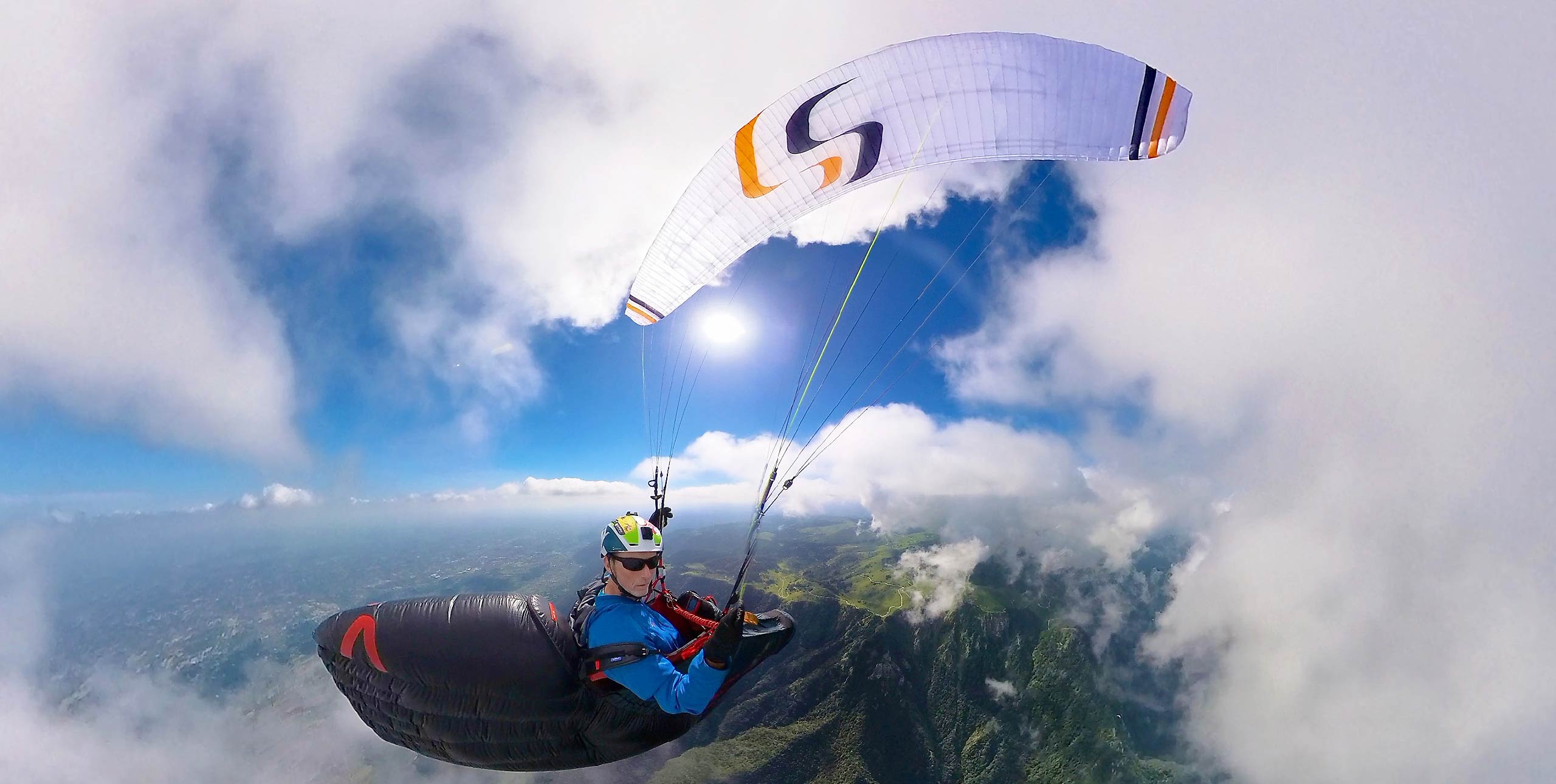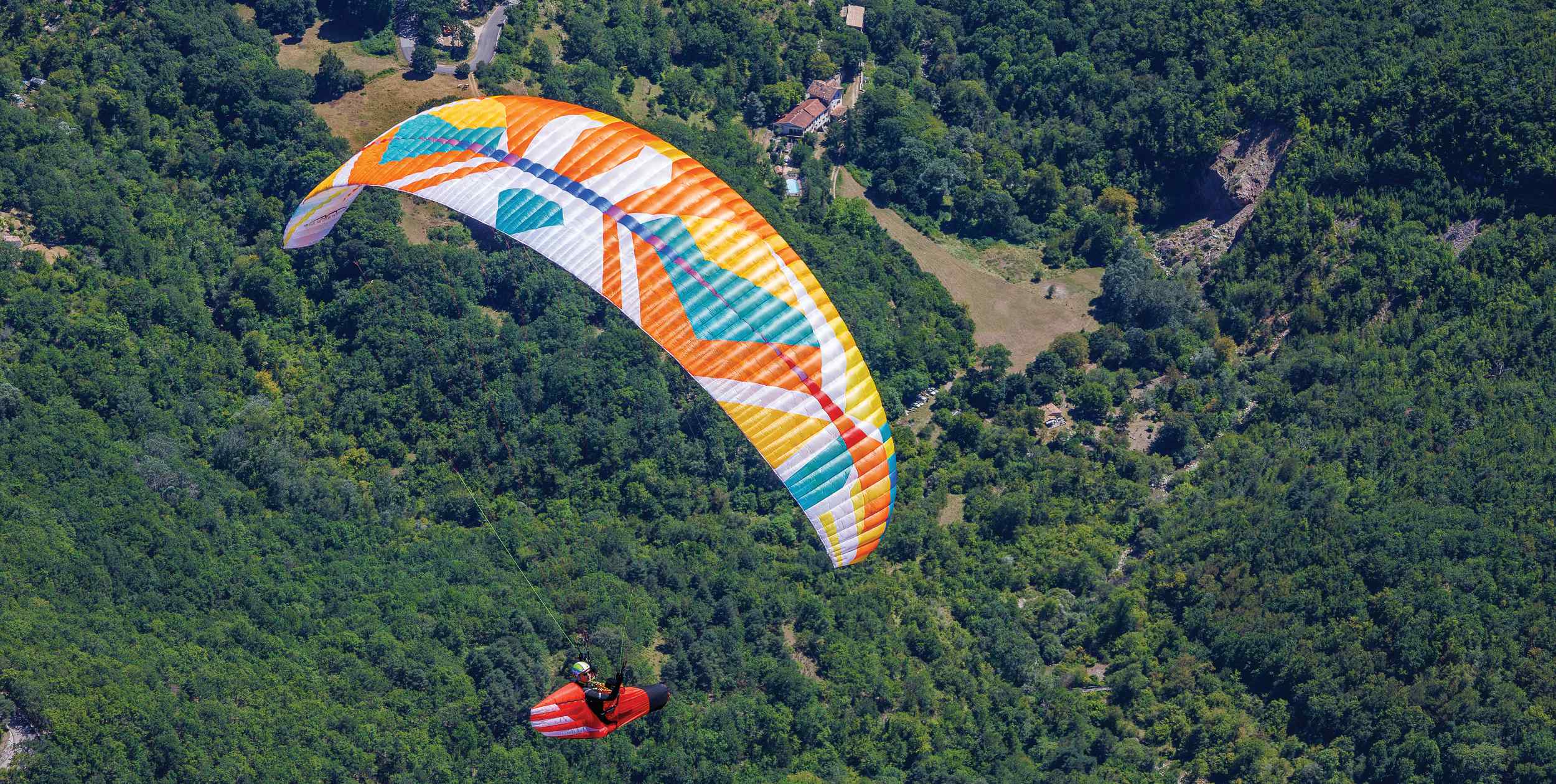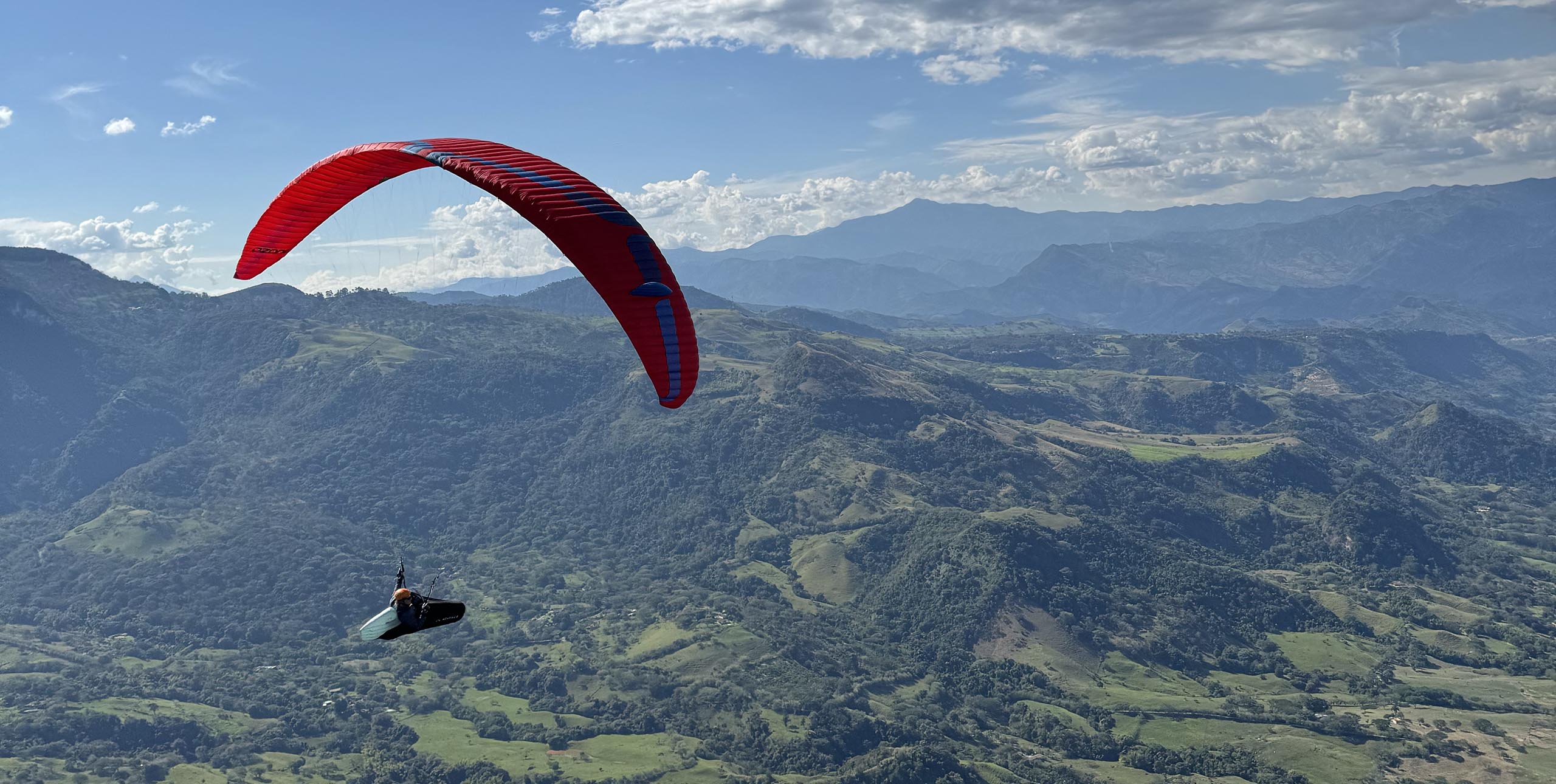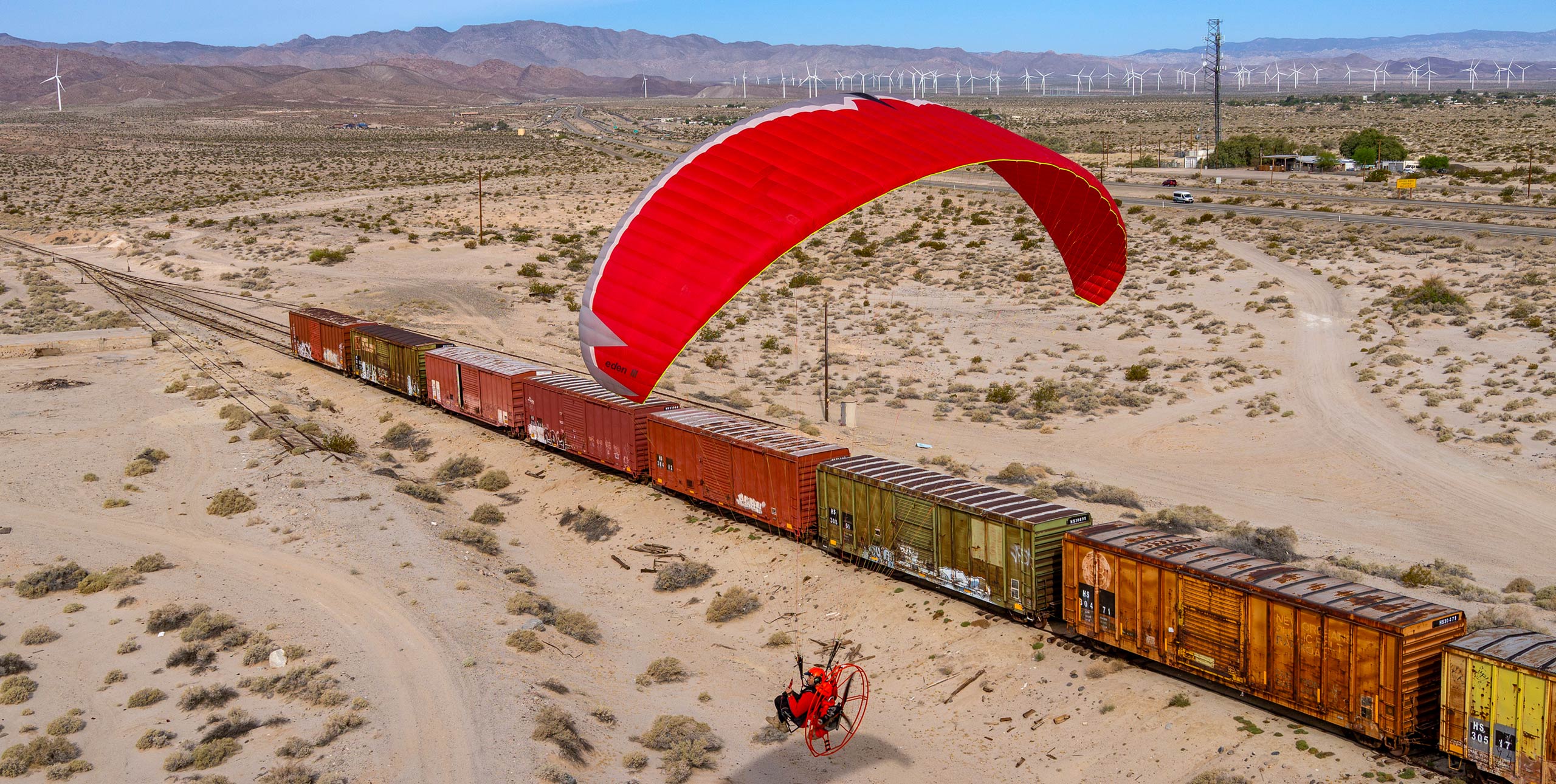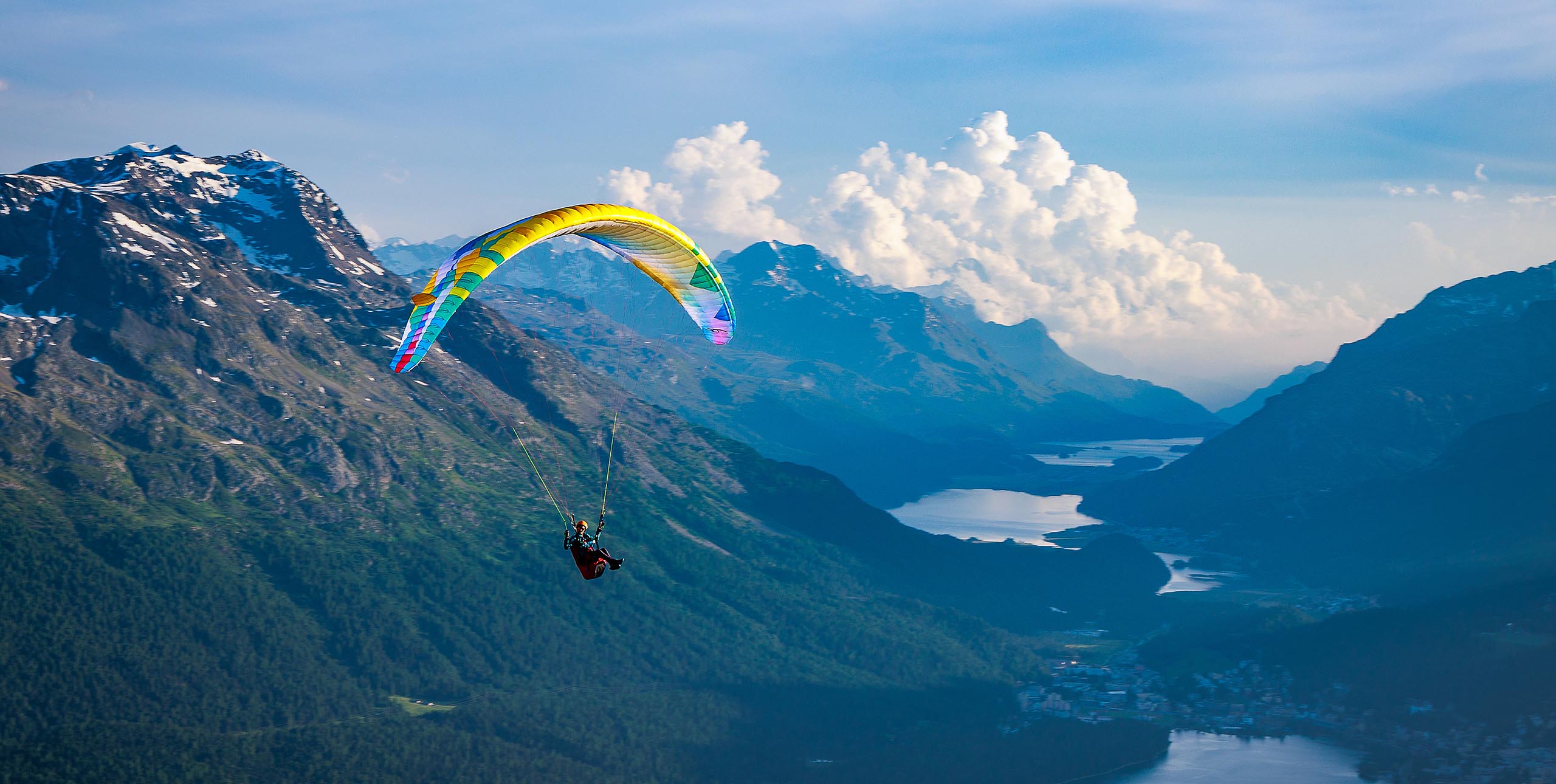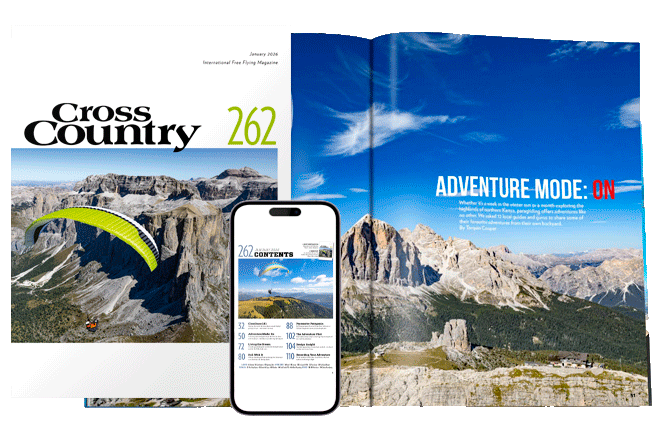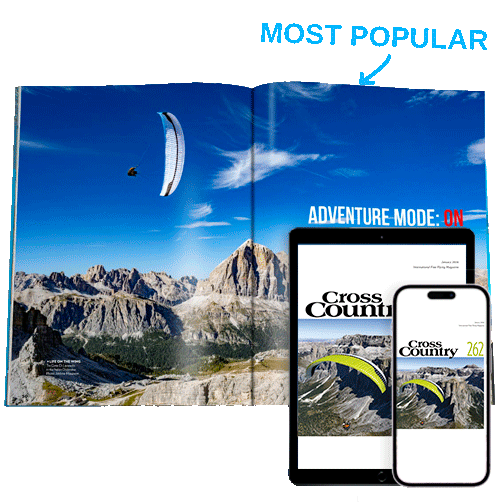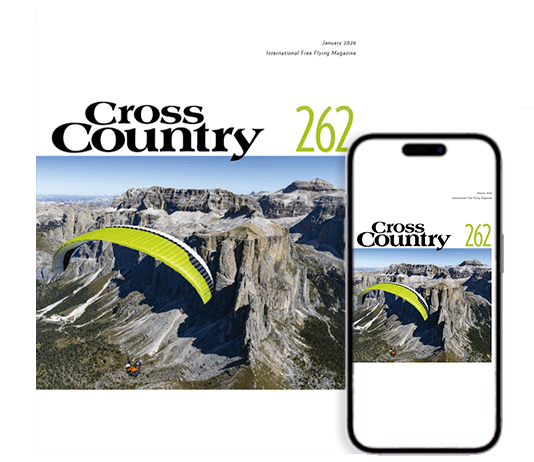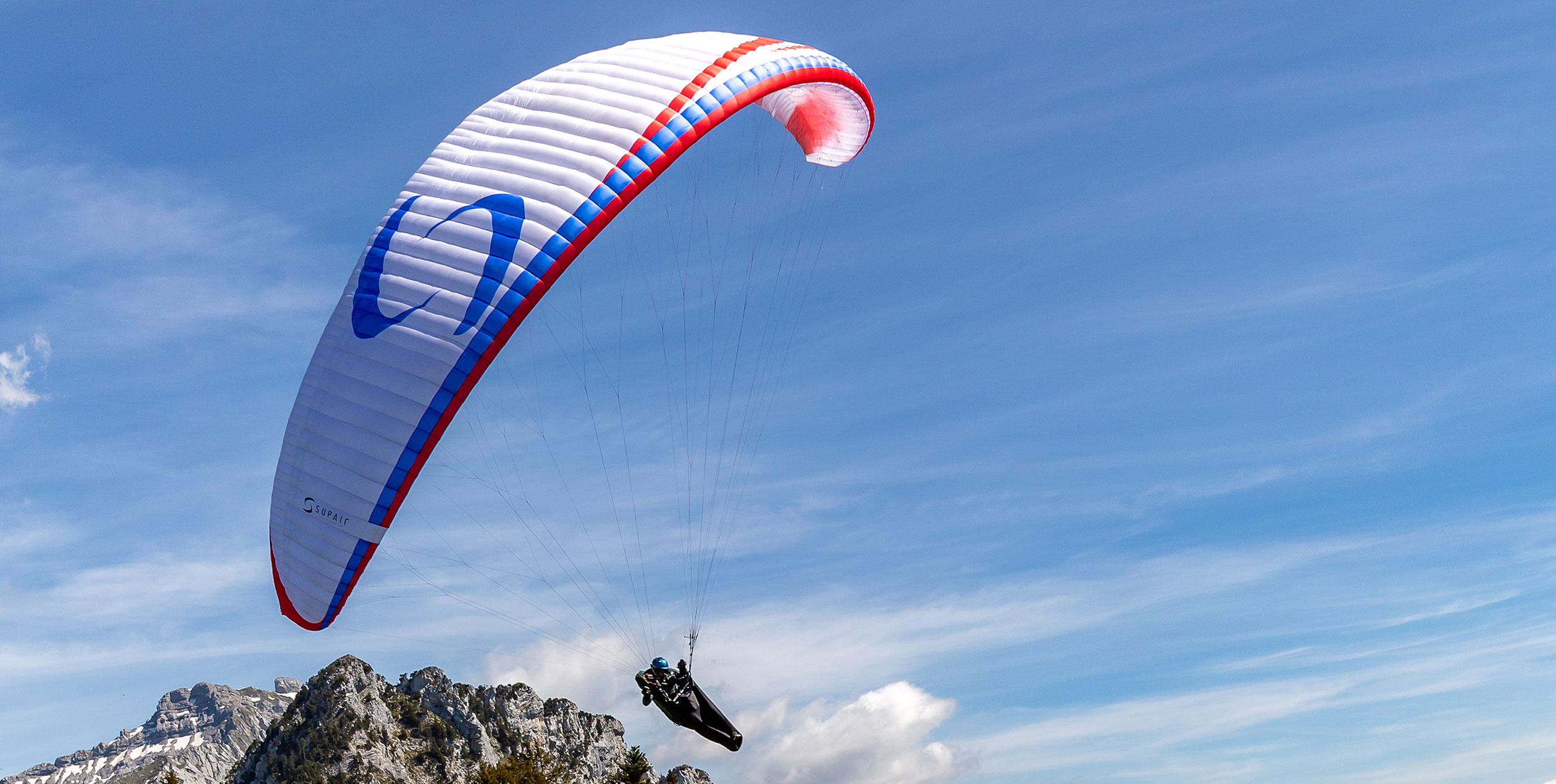
Dougie Swanson-Low flies this X-Alps-style adventure glider for the sports class pilot
Ten-second review
If you need a light wing for serious mountain adventures then take a look. Supair have come up with the goods.
Background
Do you want to get into hike-and-fly and vol-biv? Maybe you’re getting serious and are looking for a wing tailored to suit. A wing with a strong mountain pedigree, built for adventure. Understanding what you want is important, so what would it look like?
Of course it must be light and compact. It must launch easily from awkward spaces, first time. The weather won’t always be perfect, so it must be usable in all conditions: sensitive and floaty in weak lift; precise and agile in strong, broken thermals.
Good glide is important. It doesn’t have to be racy, but it does need to be efficient, especially into wind – not all routes will be downwind. It must be well-mannered so you feel confident and in control, particularly if the weather turns bad. It must be easy to top-land, squeeze into a tight spot, or spiral down. With all that in mind, meet Supair’s new EN-C adventure machine, the Savage.
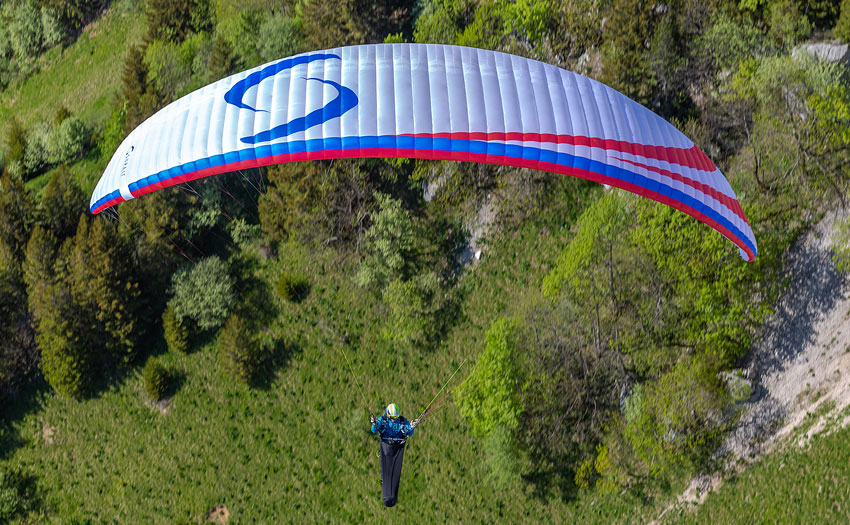
First look
At 4kg for the M (85-105kg) the Savage is about as lightweight as current EN-Cs get. It uses Skytex 27g cloth except on the top surface of the leading edge, which uses Skytex 32g. This is now standard for lightweight wings and well proven.
The lines are unsheathed, except for a tiny section on the stabilo for identification, and I was surprised by how minimal they were. Reducing line consumption is a major win in all regards, provided the wing remains well supported, leading to less weight, bulk, tangles, and most importantly, less drag for improved performance.
The risers are made from a combination of thin nylon webbing and Dyneema rope. They are simple and clean and it is easy to identify the correct configuration. Two Ronstan pulleys are used in the speed system and two more are used to create floating B lines, geared between the A’s and the C handle. After using wings where the risers have had every gram squeezed out, it was a relief to use these again. It’s a functional balance between weight-reduction and usability.
Brake handles are wide straps using well-positioned poppers to fix to the risers, with the lines guided by ceramic rings. These are comfortable, but without a stiffened structure to keep the loop open I found it fiddly to get gloved hands back in. Also, the sleeves designed to cover the softlinks didn’t work well: they slide down too easily and are difficult to pull back up. I’m sure Supair will find a better solution.
I was initially disappointed to see they hadn’t used nitinol rods as I like how tolerant of tight, messy packing nitinol is. However, the supple plastic rods used in the Savage are only present in the leading edge, forming a sharknose profile. These are short enough and don’t extend past the first fold so, provided the wing is concertina packed, you won’t deform them.
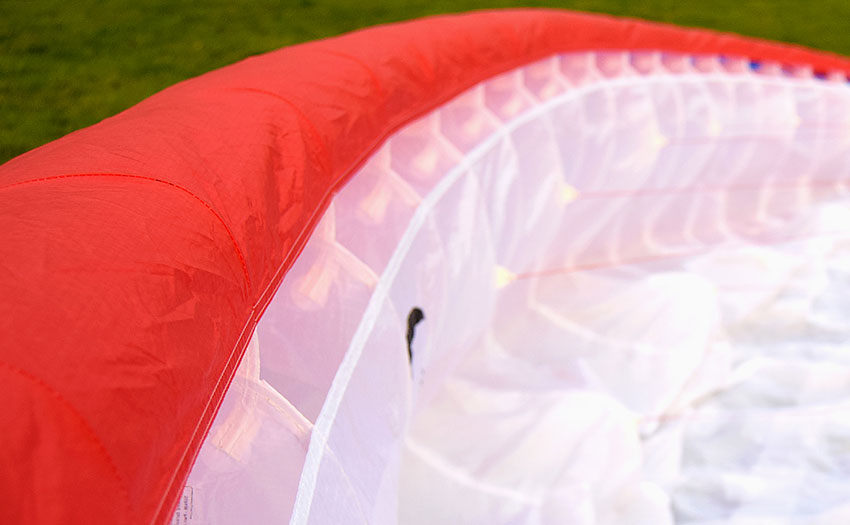
Launching
At 6.5, the Savage has a fairly high aspect ratio for an EN-C – you wouldn’t know it though. I would look at the A/R on launch, expect a hassle, and find the opposite. The low weight works in your favour as it rises smoothly, and it doesn’t overshoot when conditions are strong. Nevertheless, it is tolerant of deep braking positions to hold the wing back if required. It also generates lift quickly as you step forward, essential for clearing treelines. It’s confidence-inspiring on those awkward launches and perfect for when you are off the beaten track.
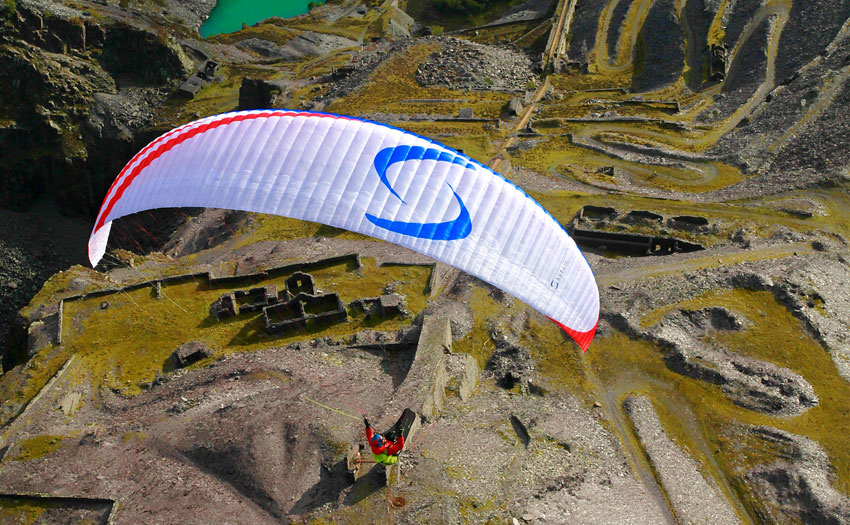
In the air
The Savage is very comfortable and pitch stable in the air, but perhaps a little less damped in the roll axis. It has neutral behaviour as it enters thermals; simply pulling forwards and up. There are little to no dive tendencies. This makes it very efficient at surfing the air. The wing speaks through the risers, some of which I felt was noise, but I prefer to know what the air is doing, rather than having a deadened wing.
The Savage feels solid, supported and well pressured for a lightweight glider, with no hint of snaky movements. I flew the M between 95kg and 103kg and consistently found it handled the best when loaded at about 97-99kg. Flying at the bottom of the weight range would noticeably detract from its handling, but loaded up it felt precise, glided well and remained floaty.
The brake length is fairly average for EN-C, but I found I was using the full range of travel to achieve the full spectrum of turn types. With small and subtle brake inputs, I could let it float around efficiently in weak lift, which it is superb at. Then I found that to grab hold of small punchy thermals I would apply quite an exaggerated and firm input on inside brake and weight-shift. Doing this, with a touch of outer brake, would really slow the wing onto bubbles and lock it into a very tight, yet surprisingly efficient, turn. The wing prefers to tighten up into a spiral, rather than spin or lose pressure in the tip.
The Savage is agile, and can work tight cores well, but needs a bit of work to do so. It maintains a consistent flat turn, responds directly to input and, while it’s not flown only on fingertips, I never had to wrestle with it when the thermals were broken apart. The Savage is a superb climber and compares very favourably against other wings in thermals. It seems to perform particularly well in difficult or weak conditions, which makes it an absolute go-to wing when you want to stay up and go far on less than perfect days.
At no point did I get a decent collapse. This is both comforting and a little disappointing for a review. The profile Supair have used maintains very good internal pressure: any time it came close to losing pressure I could feel it and correct it intuitively.
However, pulling a couple of asymmetric collapses showed me it is a little more dynamic than I expected from this otherwise comfortable wing. So, based on this, I would suggest that it should be considered a “proper” EN-C and a pilot choosing it should have the required skills. It will feel like a step, rather than a transition, from an EN-B. Nevertheless, the piloting demands in the air do not feel too high and anyone with ambition or experience in this class should feel comfortable.
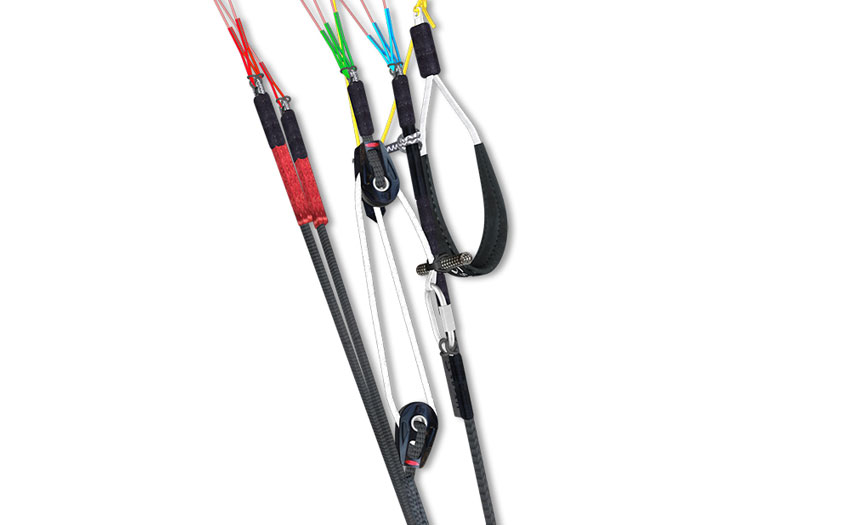
On glide
There are three reasons why I rarely ever took my feet off the bar to glide: firstly, it has a great glide angle; secondly, it is comfortable and smooth; and thirdly, Supair have developed a brilliant C-riser control system.
In fact it’s the closest I’ve felt to the direct control you get on a two-liner. The pulleys create a smooth link between the C and B lines and the 2:1 gearing allows precise and effective control over the angle of attack, without any deformation of the wing.
It is a system increasingly used by some other brands as well and feels like the next step in the evolution of rear-riser control on three-liners. The pressure is a little firm, but you can comfortably rest your arms on the handles. Altering direction, managing sudden pitch changes and slowing down in lift using the C-handles is intuitive and confidence-inspiring. For a bit of fun, I happily played with thermalling whilst on full bar and still found the control very effective!
I tested glide against a few other wings and, once again, the Savage impressed. You’ll get a noticeably better glide angle compared to an EN-B and I would put it among the best of the EN-Cs currently available. Up against smaller-sized EN-Ds for instance, you still won’t notice much difference in glide angle, however, what you will notice is you can’t come close to meeting their top speed.
Using my GPS, I measured +10km/h above trim when on full bar (at 97kg). On paper this doesn’t sound great, but in reality, the glide angle remains excellent even with pulleys together. So, I found I was actually using the full speed range and enjoying the comfortable and effective glide it gives.
With many other wings the glide angle normally drops off so noticeably that I rarely go to full bar, and realistically, I rarely feel the need for high-speed racing on a vol-biv. It barely feels like a compromise when factoring in the Savage’s other attributes.
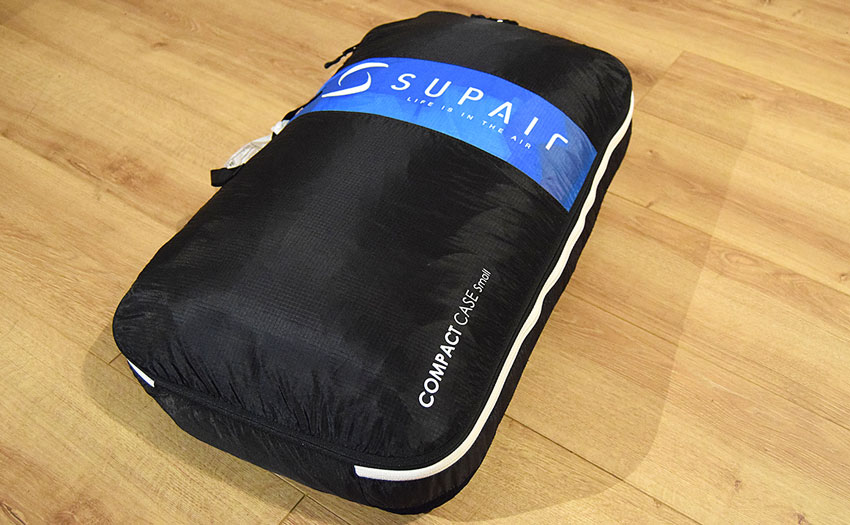
Descent and landing
You can tell the Savage was designed with top-landings in mind because it is very tolerant of being slowed down and is controllable near the stall point. Brake pressure becomes increasingly firm right up to stall point, giving plenty of warning, which makes a butterfly (flapping) landing easy. Factors like this become increasingly important when choosing a vol-biv wing and landing high. Knowing you can stuff it into any landing spot is reassuring – making you feel more bird than aircraft.
Big ears provide a reasonable increase in sink rate but can get a little thrashy if you make them too big. The easy roll makes the Savage playful while doing big wingovers and the pitch stability makes it less daunting, especially in a sudden exit from a steep spiral. Its behaviour is predictable, intuitive, and quite forgiving, making it something you can happily throw about to go down.
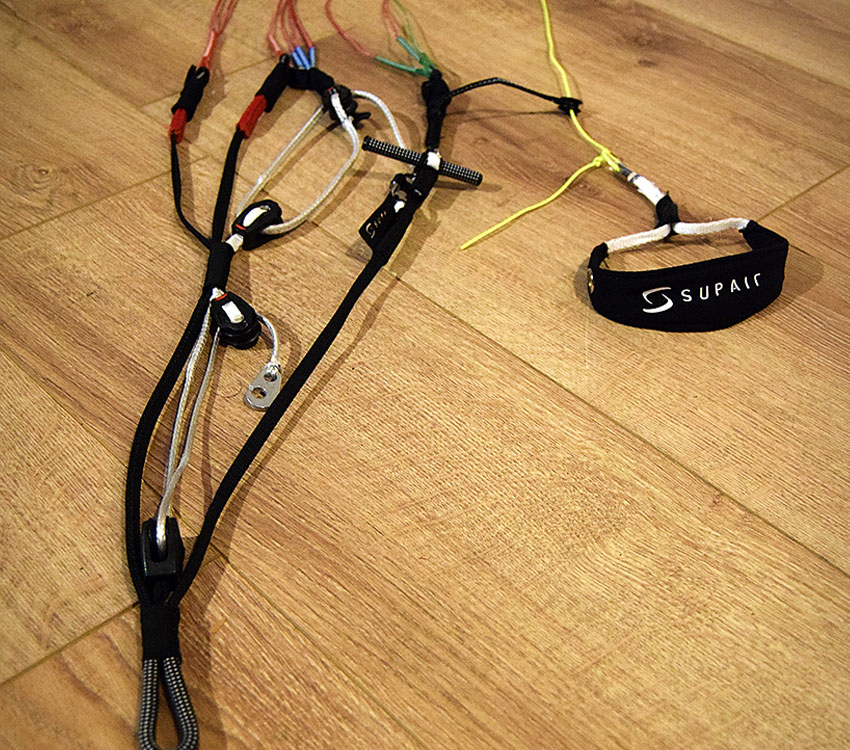
The verdict
Supair certainly knew what they wanted when they set out to design the Savage. In my book, it successfully ticks all the boxes required of a highly capable vol-biv adventure wing and the balance of features makes it hard to fault.
I became fond of how I could slow down and pivot on small bubbles of lift one moment, then cruise along confidently on full bar the next. The Savage has gears.
It never felt like a hindrance, either on the ground or in the air. It is a wing to rely on when your mind is preoccupied with uncertainties: a long hike, an awkward launch, challenging conditions, committing terrain or that tight top-landing.
It hits that sweet spot in performance of both climb and glide that makes it very capable, without becoming too demanding, which even a highly skilled pilot will consider before heading somewhere remote.
So, unless you need that extra km/h on the final glide to goal, the Savage should be high on your list to try before your next adventure.
And quite frankly, it’s a lovely wing if you simply want to lighten your bag for everyday XC flying as well.
Q&A: PIERRE-YVES ALLOIX, SUPAIR DESIGNER
What was the biggest challenge developing the Savage?
The Savage is based on the Wild (EN D, aspect ratio 7.0), our Red Bull X-Alps glider for 2017 and 2019. Benoit Outters made the podium twice flying the Wild. So with the Savage the idea was to keep the performance and speed of the Wild, but to bring the glider into the C class.
For the EN test it’s impossible to perform good collapses without a dedicated collapse line, and you automatically get a D if you use a collapse line. So I had to change the geometry of the glider and the position of the A-tabs enough to allow the test pilots to perform collapses without a collapse line. It was also important to keep the behaviour as close as possible to the Wild.
There are distinctive arch-shaped mini-ribs on the trailing edge. What are they for?
To protect the mini-rib stitching. With lightweight fabric especially, external stitching can be damaged easily. It’s more complex and expensive, but it’s worth it in terms of durability.
The method of using pulleys and the 2:1 gearing, to link the As, Bs and Cs, makes it very smooth and precise to control the wing on bar. Is this something you will implement across your other wings?
For sure this rear-riser control system gives the Savage an extra asset in terms of efficiency. You can fly faster, with better control on the angle of attack, and get better performance. The risers took us a lot of time – it’s a very complex design and the geometry must be very precise. We used our new custom 7mm Aramid material from Cousin, which is very strong but also complicated to sew because you don’t have much space to stitch on 7mm webbing! Because of all that we will most likely keep these kind of risers for high-performance wings.
What was your most memorable flying experience while developing the Savage?
A short vol-bivouac flight last year between the Aravis and Chamonix. On day two I was lucky enough to fly above Mont Blanc. I was freezing, but it was even more fun because it was unexpected. You’re so excited after such flights! Then you have to come down, be objective and finish the glider.
Manufacturer’s SPECIFICATIONS
Supair say: “A light glider to move far and fast. At 15m/s stepping on the bar or at 3m/s pushing on the hiking poles”
Use: XC, vol-biv, hike-and-fly, adventures
Pilot level: Advanced
Sizes: XS, S, M, M/L
Flat area (m²): 22.5, 24.5, 26, 27.5
Certified take-off weight (kg): 65-85, 75-95, 85-105, 95-115
Glider weight (kg): 3.6, 3.8, 4, 4.3
Cells: 67
Flat aspect ratio: 6.5
Certification: EN C
Dougie Swanson-Low
Dougie is a vol-biv, XC and competition pilot. His biggest vol-biv adventure to date is a flight along the length of the Alps in summer 2019. This year he stayed local, exploring the mountains of Snowdonia in his native Wales. At work he is a design manager for climbing equipment manufacturer DMM. He flew the Savage M with a Supair Strike harness.
Published in Issue 216 (Dec 2020 / Jan 2021)



